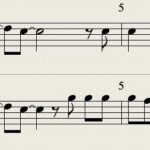Like many, the flashing lights and energetic music of arcade rhythm games always seemed a bit daunting. Confessing a slight clumsiness and less-than-lightning reflexes, the idea of stepping onto a dance pad in sync with a barrage of arrows felt like a recipe for comical disaster. It was with this apprehension that I casually acknowledged the existence of a Dance Dance Revolution (DDR) machine tucked away in the basement of Walker Memorial at MIT. Knowing about it for a year, I finally decided to give dance a chance and explore this iconic game. Little did I know, this initial hesitation would quickly transform into an unexpected and thoroughly enjoyable experience.
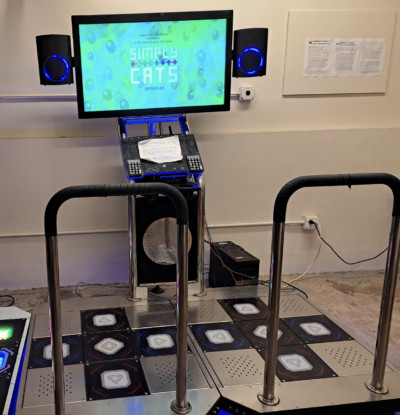 A vibrant Dance Dance Revolution arcade machine screen and dance pads setup, inviting players to step up and dance.
A vibrant Dance Dance Revolution arcade machine screen and dance pads setup, inviting players to step up and dance.
Understanding the Dance Dance Revolution Gameplay
For those unfamiliar, Dance Dance Revolution is a rhythm-based arcade game where players physically interact with the music. The setup is straightforward: a screen displays arrows moving upwards, corresponding to four pressure-sensitive pads at your feet – up, down, left, and right. You select a song, and as the music begins, arrows scroll upwards, and your objective is to step on the matching pad when the on-screen arrows reach the top. Accuracy is key; the better your timing and coordination, the more points you earn. The arrow patterns are cleverly designed to follow the rhythm and beats of the music, creating a sense of dance and immersion when played correctly.
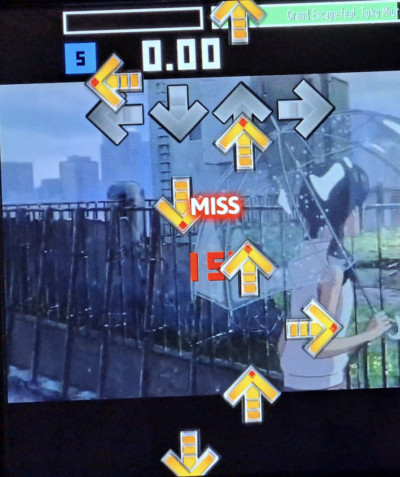 Example sequence of Dance Dance Revolution arrows moving upwards, indicating steps for players to follow in sync with the music.
Example sequence of Dance Dance Revolution arrows moving upwards, indicating steps for players to follow in sync with the music.
The Surprisingly Addictive Learning Curve of Dance
What truly captivated me about DDR was its beginner-friendly learning curve. Despite my initial skepticism, within the first hour of gameplay, I found myself making significant progress. I learned to maintain my position on the dance pads without constantly looking down, relying on muscle memory and the support bar for balance. My timing improved as I shifted from visual cues to listening to the song’s rhythm. Soon, I was tackling more complex moves like jumps (requiring simultaneous steps on two pads) and freezes (holding down a pad for sustained arrows). The game’s design gently guides you from basic steps to more intricate dance patterns, making each small victory feel rewarding and encouraging you to push further.
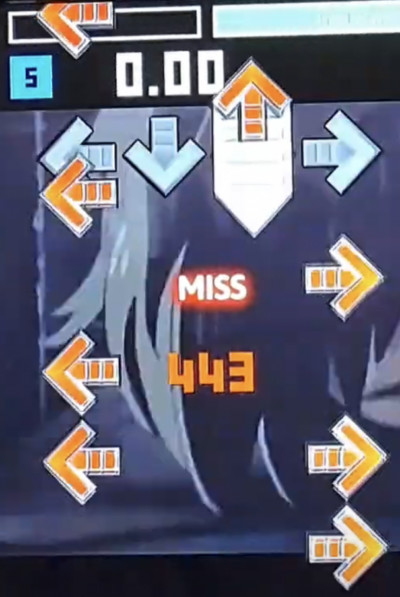 A challenging Dance Dance Revolution sequence showing a freeze arrow and a jump arrow, requiring advanced footwork and timing.
A challenging Dance Dance Revolution sequence showing a freeze arrow and a jump arrow, requiring advanced footwork and timing.
Conquering “Grand Escape” and Game Settings for Better Dance Flow
Driven by a newfound enthusiasm, I aimed to conquer a specific level before my time at MIT concluded. The song was “Grand Escape,” from the anime film “Weathering with You,” a personal favorite. However, the song proved to be a significant challenge. While I could manage the initial, beginner-friendly sections, the song’s climax was a barrage of rapidly approaching arrows.
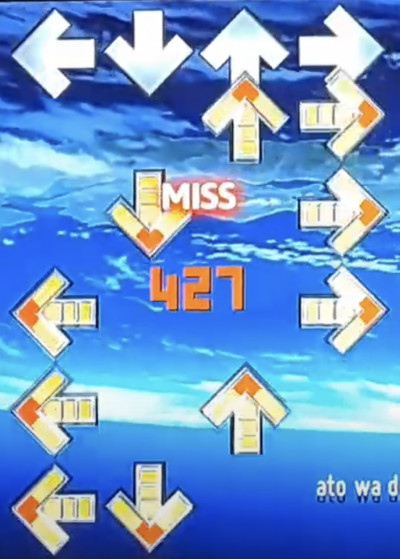 Consecutive jump arrows in the climax of Dance Dance Revolution song "Grand Escape," presenting a high-difficulty challenge.
Consecutive jump arrows in the climax of Dance Dance Revolution song "Grand Escape," presenting a high-difficulty challenge.
The climax featured a relentless sequence of 27 consecutive jumps. At 146 bpm, or 2.43 beats per second, processing two arrows at once became overwhelming. Frustration mounted as I repeatedly failed at the same hurdle. Seeking advice, a friend (F) observed my gameplay and suggested a counter-intuitive solution: increasing the on-screen arrow speed. Initially, this seemed paradoxical – faster arrows, less reaction time? My concern was about losing the ability to anticipate and plan ahead, wanting to see multiple arrow sets to prepare my dance steps. However, F pointed out that the clutter of numerous arrows was likely hindering my ability to read them effectively, not the reaction time itself, and that over-planning wasn’t necessary.
Trusting this advice, I adjusted the arrow speed to 2-3 times faster. The difference was immediately noticeable.
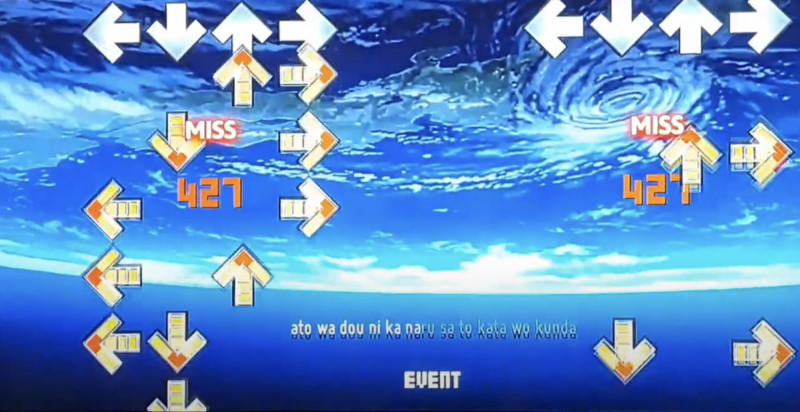 Comparison of Dance Dance Revolution screen displays: left shows regular arrow speed, right shows faster arrow speed for the same song section.
Comparison of Dance Dance Revolution screen displays: left shows regular arrow speed, right shows faster arrow speed for the same song section.
Despite the reduced time to react, the cleaner screen, with fewer arrows visible at once, made it significantly easier to process the patterns. After a few more attempts, I successfully navigated the jump sequence and cleared the level.
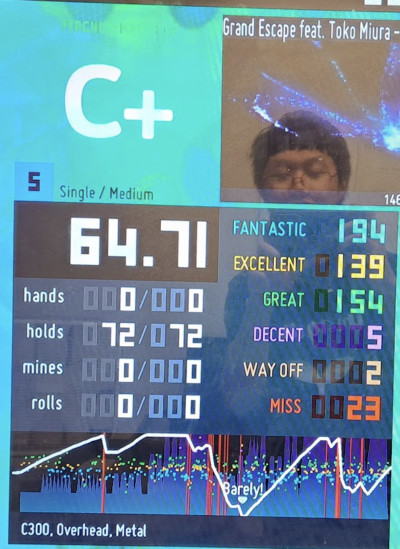 Screenshot of Dance Dance Revolution game result, showing successful completion of the song, though not a perfect score.
Screenshot of Dance Dance Revolution game result, showing successful completion of the song, though not a perfect score.
Dance, Focus, and Letting Go of Overthinking
Looking back, my struggle with “Grand Escape” mirrored a broader life lesson. Just as I was overcomplicating my DDR gameplay by trying to anticipate too many steps ahead, we often do the same in life. We become overwhelmed by future planning and accumulating tasks, creating mental clutter that hinders our focus on the present. We believe the solution is to think harder and plan more meticulously, but sometimes, the answer lies in simplifying, decluttering, and focusing on one step at a time. Dance Dance Revolution, in its own unexpected way, taught me the value of presence, focus, and letting go of the need to control every step in advance – a rhythm to embrace both in the game and in life.

